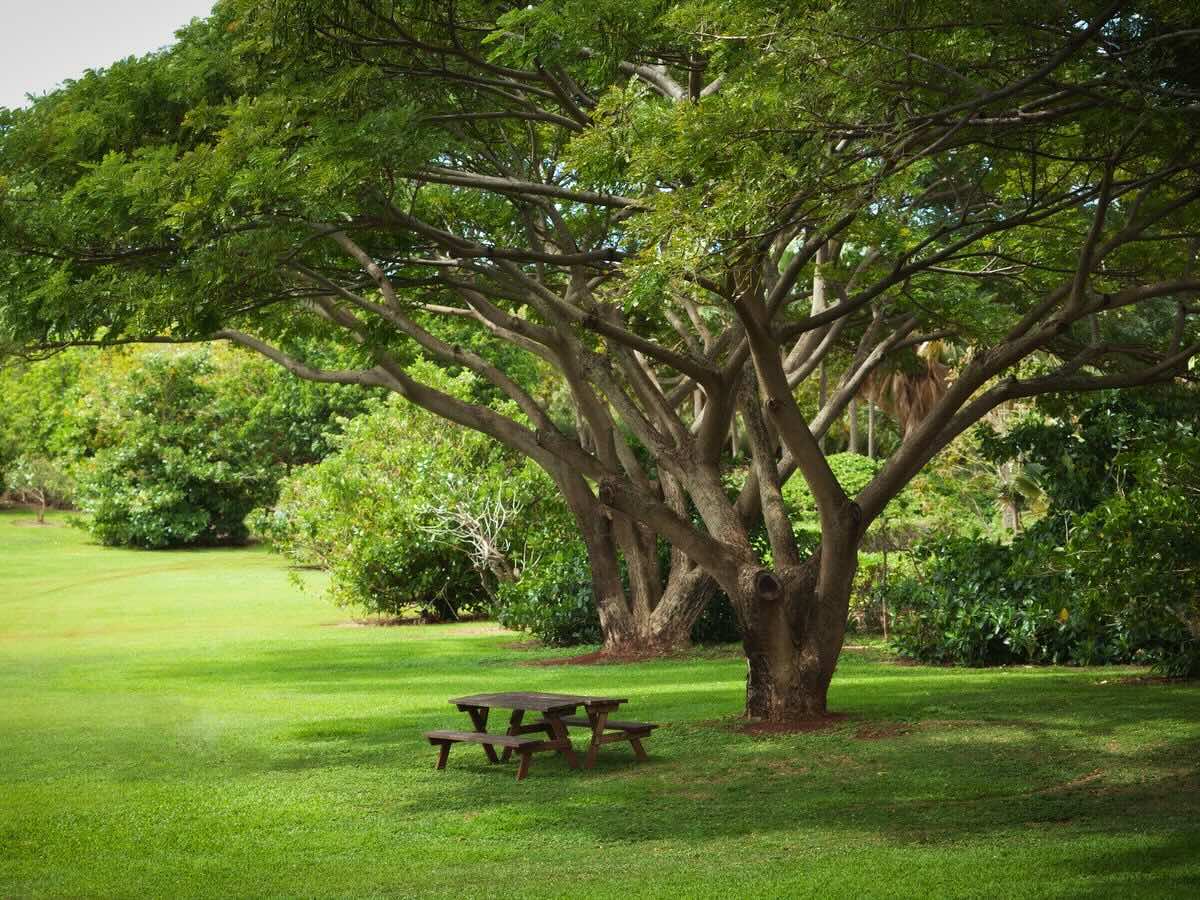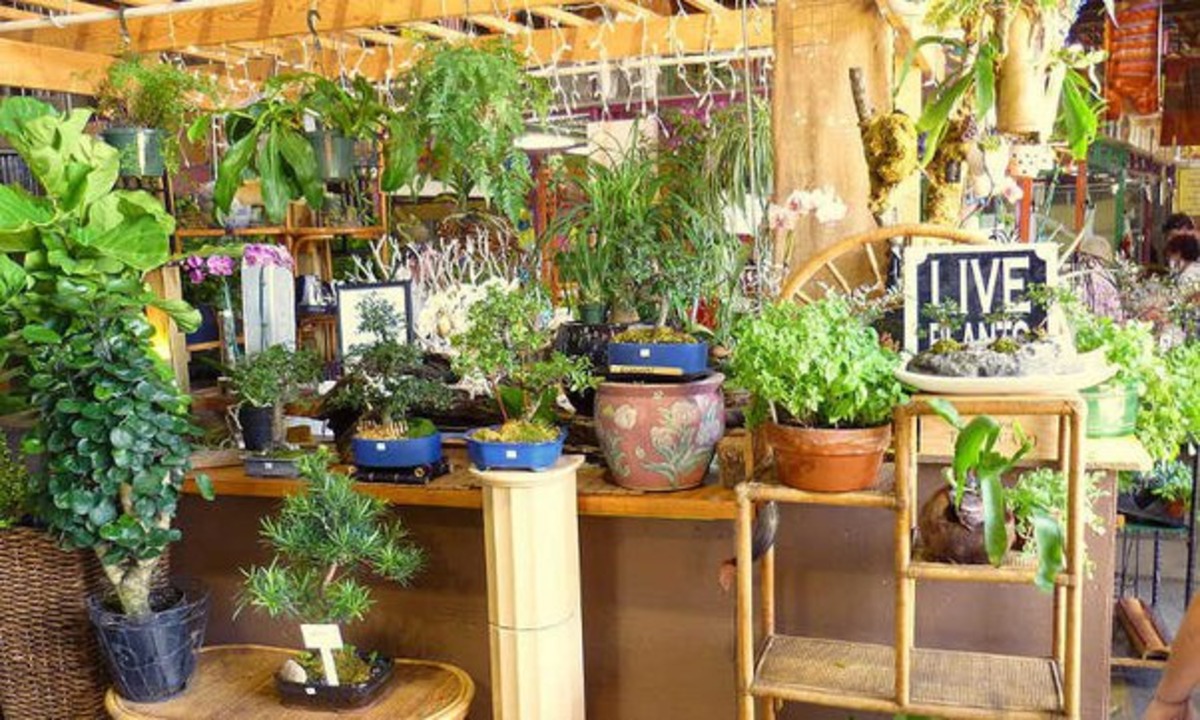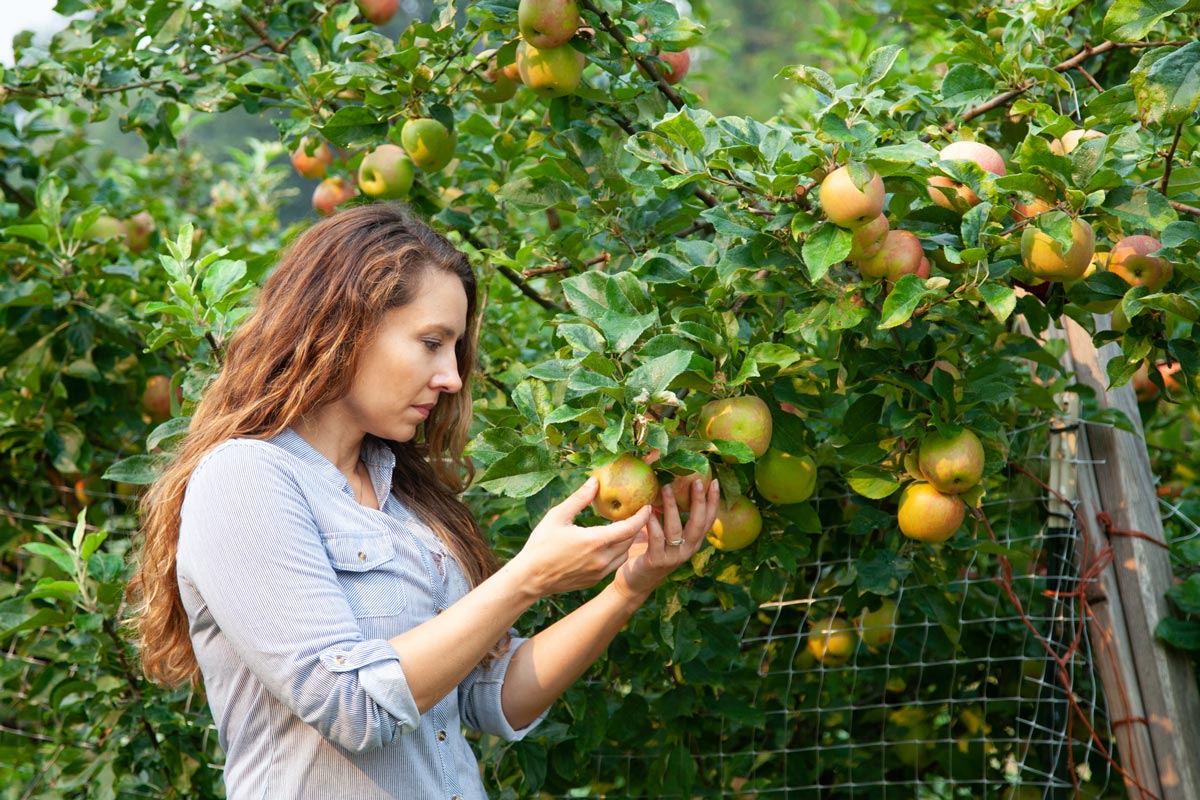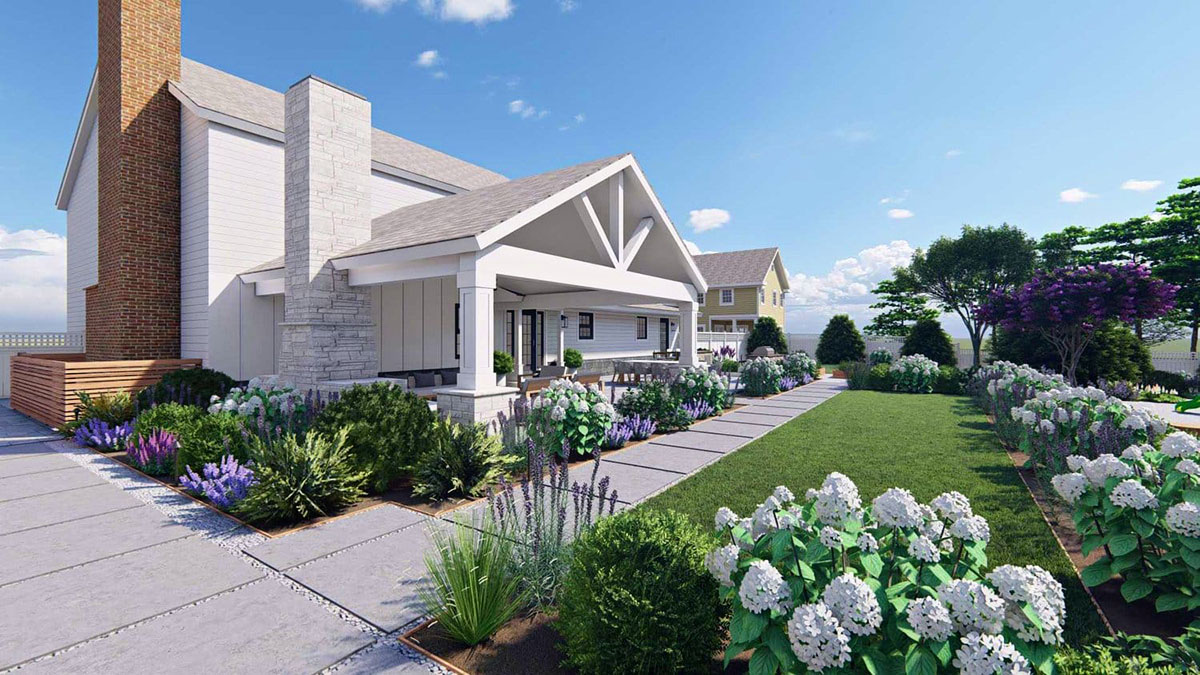Home>Garden Essentials>What Do You Call The Backyard Greenery Plants And Trees


Garden Essentials
What Do You Call The Backyard Greenery Plants And Trees
Modified: October 20, 2024
Enhance your garden with a variety of backyard greenery plants and trees. Discover the perfect additions to create a lush and vibrant outdoor oasis.
(Many of the links in this article redirect to a specific reviewed product. Your purchase of these products through affiliate links helps to generate commission for Storables.com, at no extra cost. Learn more)
Introduction
Welcome to the wonderful world of backyard greenery! There’s something truly magical about having a lush garden, filled with vibrant plants and majestic trees, right in your own backyard. Not only does it add aesthetic beauty to your outdoor space, but it also provides a plethora of benefits that go beyond mere visual appeal.
When we talk about backyard greenery, we are referring to the wide variety of plants and trees that can be grown and nurtured in your outdoor space. From colorful flowers to towering trees, the possibilities are endless. Whether you have a small patio or a sprawling yard, there’s always room to incorporate some greenery and create your own personal oasis.
In this article, we’ll explore the different types of backyard greenery plants and trees, discuss their benefits, and provide some tips on how to choose the right ones for your specific needs. We’ll also delve into the essential care that these plants and trees require to thrive, as well as common issues that you may encounter and their solutions. Finally, we’ll explore some inspiring design ideas to help you integrate backyard greenery seamlessly into your outdoor space.
So, if you’re ready to embark on a journey of botanical discovery and transform your backyard into a lush paradise, let’s dive in and explore the wonders of backyard greenery!
Key Takeaways:
- Backyard greenery, including flowers, trees, and herbs, offers benefits like stress reduction, improved air quality, and a connection with nature. Choose plants that thrive in your climate and space.
- Design your backyard oasis with vertical gardens, colorful flower beds, shade retreats, and water features. Let your imagination guide you to create a space that brings joy and tranquility.
Read more: What Do You Call A Covered Walkway
Types of Backyard Greenery Plants and Trees
When it comes to backyard greenery, the choices are seemingly endless. Whether you prefer vibrant flowers, aromatic herbs, or towering trees, there’s a wide array of options to suit every taste and preference. Here are some of the most popular types of backyard greenery plants and trees:
- Flowering Plants: The beauty of colorful blooms can instantly transform any outdoor space. From roses and tulips to daisies and sunflowers, flowering plants add a burst of vibrancy and charm to your backyard. Consider planting a mix of annuals and perennials to enjoy a continuous display of flowers throughout the seasons.
- Foliage Plants: If you prefer the lush greenery of leaves, foliage plants are an excellent choice. From ornamental grasses and ferns to hostas and palms, these plants add texture and depth to your garden. They come in various shades of green, from light and bright to dark and dramatic, making them perfect for creating a visually appealing backdrop.
- Fruit-Bearing Trees: Imagine stepping into your backyard and plucking fresh, juicy fruits right off the branches. Fruit-bearing trees, such as apple, cherry, peach, and citrus trees, not only provide a bountiful harvest but also add beauty and shade to your outdoor space. Just make sure to choose trees that are suitable for your climate and have enough space to grow.
- Evergreen Trees: If you’re looking for year-round foliage and a touch of elegance, evergreen trees are a fantastic option. These trees retain their lush green leaves throughout the seasons, providing visual interest and privacy. Popular choices include pine, spruce, cedar, and cypress trees.
- Herbaceous Plants: For those who love to cook or simply enjoy the fragrance of fresh herbs, herbaceous plants are a must-have. From basil and thyme to rosemary, mint, and lavender, these plants not only enhance the aroma of your garden but also serve as a convenient source of culinary flavorings and herbal remedies.
- Climbing Plants: To add vertical interest and create a stunning focal point in your backyard, consider incorporating climbing plants. These vines can be trained to grow on trellises, fences, or walls, adding a touch of romance and allure to your outdoor space. Popular choices include ivy, clematis, wisteria, and honeysuckle.
Remember, these are just a few examples of the vast world of backyard greenery. You can mix and match different plants and trees to create a diverse and visually captivating garden that reflects your personal style and preferences. Whether you opt for bold and dramatic or soft and serene, the key is to choose plants and trees that thrive in your specific climate and are well-suited to your available space.
Benefits of Backyard Greenery
Having a backyard filled with greenery goes far beyond aesthetic appeal. It offers numerous benefits that enhance both your physical and mental well-being. Here are some of the key advantages of incorporating backyard greenery into your outdoor space:
- Improved Air Quality: Plants and trees are natural air purifiers. Through the process of photosynthesis, they absorb carbon dioxide and release oxygen, improving the air quality around them. This can have a significant impact on your overall health, reducing the risk of respiratory issues and enhancing oxygen circulation.
- Stress Reduction: Spending time in a green environment has been proven to reduce stress levels. The colors, scents, and serene atmosphere created by backyard greenery can help calm your mind and promote relaxation. Whether you’re enjoying a cup of tea surrounded by flowers or simply taking a stroll through your garden, the natural beauty of your green space has a soothing effect on your well-being.
- Physical Exercise: Maintaining a backyard filled with greenery requires physical activity, such as gardening and pruning. These activities provide a form of exercise that helps strengthen muscles, improve flexibility, and promote overall physical fitness. Plus, spending time outdoors while tending to your plants and trees exposes you to fresh air and sunlight, which are essential for your body’s well-being.
- Increased Biodiversity: Backyard greenery acts as a sanctuary for various creatures, from birds and butterflies to bees and beneficial insects. By creating a diverse ecosystem in your outdoor space, you contribute to the preservation of biodiversity in your area. This is not only beneficial for the local ecosystem but also adds visual interest and promotes a harmonious balance in nature.
- Privacy and Noise Reduction: Trees and shrubs strategically placed in your backyard can act as natural barriers, offering privacy and reducing noise pollution. The foliage creates a visual shield, shielding your outdoor space from prying eyes and buffering unwanted sounds from nearby roads or neighbors. This allows you to enjoy your backyard in peace and tranquility.
- Temperature Regulation: Backyard greenery plays a crucial role in regulating temperature in your outdoor space. Trees provide shade, shielding your garden from the scorching sun and reducing heat absorption by the ground. This, in turn, keeps your outdoor area cooler and more comfortable, allowing you to spend more time enjoying the fresh air without feeling overheated.
- Connection with Nature: In our busy modern lives, it’s easy to become disconnected from nature. Having a backyard filled with greenery provides an opportunity to reconnect with the natural world. It allows you to observe the changing seasons, witness the growth and blossoming of plants, and experience the wonders of the ecosystem right outside your doorstep.
These are just a few of the many benefits that backyard greenery brings to your life. So, why not create your own oasis of green and reap the rewards that nature has to offer?
How to Choose the Right Backyard Greenery
Choosing the right backyard greenery is essential to ensure their successful growth and longevity. Here are some important factors to consider when selecting plants and trees for your outdoor space:
- Climate Compatibility: Start by understanding the climate in your area. Different plants and trees have specific temperature, humidity, and sunlight requirements. Research which species are well-suited to your climate zone to ensure they can thrive in your backyard.
- Available Space: Assess the available space in your backyard and consider the size of the plants and trees you intend to grow. Make sure they have enough room to spread their roots and branches without becoming overcrowded. Avoid planting large trees near structures or utility lines to prevent potential damage in the future.
- Soil Conditions: Take note of the soil conditions in your backyard. Some plants prefer well-draining soil, while others thrive in moist or sandy soil. Conduct a soil test to determine its pH level and nutrient content. This will help you choose greens that are well-suited to your soil and can grow optimally in your backyard.
- Maintenance Requirements: Consider the amount of time and effort you are willing to dedicate to maintaining your backyard greenery. Some plants and trees require regular pruning, fertilization, and pest control, while others are more low-maintenance. Choose greens that align with your gardening skills and the amount of time you can commit to their care.
- Personal Preferences: Your backyard greenery should reflect your personal style and preferences. Consider the colors, scents, and overall aesthetics you desire. Do you prefer a wild, natural look or a more structured and landscaped design? Think about the ambiance you want to create in your outdoor space and choose greenery that resonates with your vision.
- Compatibility with Other Plants: If you already have existing plants or trees in your backyard, ensure that the new additions are compatible with them. Some plants can inhibit the growth of others or have specific requirements that may not align with neighboring plants. Research the compatibility of different species to create a harmonious and thriving garden.
- Seasonal Interest: Consider the seasonal interest of the plants and trees you choose. Some greens offer stunning spring blooms, while others display vibrant fall foliage. By selecting a mix of plants with varying seasonal interest, you can create a visually captivating backyard that evolves throughout the year.
Remember, selecting the right backyard greenery requires careful consideration of these factors. Take your time to research and plan before making your final choices. By choosing greens that are well-suited to your climate, space, and personal preferences, you’ll be on your way to creating a thriving and beautiful backyard oasis.
When referring to the greenery in your backyard, you can simply call them “plants” or “trees.” If you want to be more specific, you can use the actual names of the plants or trees, such as “rose bushes” or “oak trees.”
Caring for Backyard Greenery Plants and Trees
Proper care is essential for the health and longevity of your backyard greenery. Here are some general guidelines to help you care for your plants and trees:
- Watering: Adequate watering is crucial to keep your greenery hydrated. Different plants have varying water requirements, so it’s important to research and understand the needs of each species. Generally, it’s better to water deeply and less frequently rather than shallowly and frequently. This encourages deep root growth and helps the plants withstand drought conditions.
- Fertilizing: Most plants benefit from regular fertilization to provide essential nutrients. Choose a balanced, slow-release fertilizer and follow the manufacturer’s recommendations on application rates and timings. Be mindful of over-fertilizing, as it can be harmful to the plants. Organic alternatives such as compost or manure can also be used to provide natural nutrients.
- Pruning: Regular pruning helps maintain the shape and size of your plants and trees, promotes better airflow, and removes dead or diseased branches. Prune during the appropriate time of year for each plant species, as timing can affect growth and flowering. Use sharp pruning tools and sanitize them between each cut to prevent the spread of diseases.
- Weeding: Prevent weed growth by regularly removing them from your garden. Weeds compete with your backyard greenery for nutrients and water and can negatively impact their health. Pull weeds from the root to ensure they don’t regrow. Consider using organic mulch to suppress weed growth and retain soil moisture.
- Pest Control: Monitor your plants for any signs of pests or diseases. Identify the issue early and take appropriate measures to control it. This can include using organic pest control methods such as neem oil or introducing beneficial insects to the garden. Avoid using harmful chemical pesticides that can harm other beneficial insects and the environment.
- Winter Protection: In colder climates, it’s essential to protect your plants and trees from freezing temperatures. Mulch around the base of plants to insulate the soil and protect the roots. Consider using burlap or other protective coverings for more delicate plants or trees. Avoid pruning during late summer or fall, as it can encourage new growth that is vulnerable to winter damage.
- Monitoring and Care: Regularly inspect your backyard greenery for any signs of stress, nutrient deficiencies, or diseases. Adjust care practices accordingly, such as adjusting watering schedules or applying targeted treatments. Additionally, keep an eye out for signs of pests, including chewed leaves or discolored foliage, and take appropriate action if necessary.
Remember, each plant and tree may have specific care requirements, so it’s important to research and understand the needs of each species in your backyard greenery. By providing proper care and attention, you’ll ensure that your green oasis thrives and brings beauty and joy to your outdoor space for years to come.
Read more: What Do You Call A Room Divider
Common Issues and Solutions for Backyard Greenery
While backyard greenery can bring immense joy and beauty to your outdoor space, it’s not uncommon to encounter some common issues along the way. Here are a few common problems that you may come across and some effective solutions to address them:
- Pests: Pests like aphids, snails, and caterpillars can wreak havoc on your plants. To control these pests, employ organic pest control methods such as introducing beneficial insects like ladybugs or using homemade sprays made from neem oil or soap. Regularly inspect your plants and take action at the first sign of an infestation.
- Diseases: Fungal, bacterial, and viral diseases can affect the health of your greenery. To prevent and manage diseases, ensure proper spacing between plants for adequate airflow, maintain good sanitation practices, and water your plants at the base to minimize moisture on the foliage. If a disease is identified, promptly remove affected plant parts and apply organic fungicides or antibacterial treatments.
- Overwatering or Underwatering: Improper watering is a common issue that can harm your plants. Overwatering can lead to root rot, while underwatering can cause dehydration. To avoid these issues, check soil moisture regularly and water plants deeply when the top inch of soil is dry. Adjust watering frequency according to the needs of each plant species to ensure optimal hydration.
- Nutrient Deficiencies: Yellowing leaves, stunted growth, and poor fruiting can indicate nutrient deficiencies in your plants. Conduct a soil test to determine which nutrients are lacking, and amend the soil accordingly with organic fertilizers or nutrient-rich compost. Regularly fertilize your plants, following the recommended application rates for each species.
- Environmental Stress: Extreme weather conditions like heatwaves, frost, or strong winds can stress your plants. Consider using protective covers, like frost blankets or shade cloth, during extreme weather conditions. Properly mulch around the base of plants to regulate soil temperature and retain moisture. Providing a sheltered microclimate for sensitive plants can help mitigate environmental stress.
- Improper Pruning: Incorrect pruning techniques can negatively impact the growth and flowering of your plants and trees. Learn proper pruning techniques for each species, including when and how to prune. Avoid excessively removing foliage or branches, as it can weaken the plant and disrupt its natural form. If in doubt, consult gardening resources or seek advice from local experts.
Remember, while these issues can be challenging, they are common in gardening. With proper care, vigilance, and timely intervention, you can effectively manage and overcome these challenges to ensure the health and well-being of your backyard greenery.
Design Ideas for Incorporating Backyard Greenery
When it comes to incorporating backyard greenery into your outdoor space, the design possibilities are endless. Whether you have a small balcony, a cozy patio, or a spacious yard, here are some creative ideas to inspire you:
- Vertical Gardens: If space is limited, consider vertical gardening. Install hanging baskets, trellises, or wall-mounted planters to create a vertical garden. Choose trailing plants, such as ivy or petunias, or opt for compact plants like herbs and succulents. Vertical gardens not only maximize space but also add a gorgeous living tapestry to your walls.
- Colorful Flower Beds: Create vibrant flower beds by choosing a variety of colorful flowers that bloom at different times throughout the year. Arrange them in clusters or patterns to create eye-catching displays. Incorporate flowers of varying heights and textures for added visual interest.
- Herb and Vegetable Patch: Create a functional and visually appealing herb and vegetable garden. Use raised beds or containers to grow herbs, lettuce, tomatoes, and other vegetables. Group them together in an organized manner, and consider adding decorative elements like trellises, colorful pots, or garden markers to enhance the aesthetic appeal.
- Shade Retreat: If your backyard lacks natural shade, create a shaded retreat by planting trees or installing pergolas or arbors. Choose trees that provide ample shade, like maples or oaks. Add outdoor seating, such as a hammock or a cozy seating area, to enjoy the coolness and tranquility of your shaded oasis.
- Water Features: Incorporate the soothing sound of water with a small pond, fountain, or birdbath. The gentle gurgling of water adds a sense of serenity to your backyard. Surround the water feature with lush green plants and colorful flowers to create a tranquil and refreshing atmosphere.
- Native Plant Garden: Create a garden using native plants that are well-suited to your region. Native plants are easier to maintain and provide habitat for local wildlife. Research the native plants in your area and design a garden that showcases their beauty, while also contributing to the local ecosystem.
- Theme Gardens: Get creative with themed gardens, such as a butterfly garden, a cottage garden, or a succulent garden. Choose plants and flowers that align with the theme and use design elements like pathways, seating areas, and decorative accents to enhance the theme’s essence.
Remember, these are just a few design ideas to get your creative juices flowing. Feel free to mix and match different elements to create a unique and personalized backyard oasis. Whether you prefer a formal and structured design or a whimsical and wild garden, let your imagination guide you in creating a space that brings you joy and connects you with the beauty of nature.
Conclusion
Incorporating backyard greenery into your outdoor space is a rewarding and fulfilling endeavor. From colorful flowers and lush foliage to majestic trees and aromatic herbs, the possibilities are endless. As you’ve discovered, backyard greenery offers numerous benefits, including improved air quality, stress reduction, and a connection with nature.
When choosing the right greenery for your backyard, consider factors such as climate compatibility, available space, and maintenance requirements. Ensure proper care by watering, fertilizing, pruning, and addressing common issues like pests and diseases. By doing so, you’ll create a thriving ecosystem that brings beauty and joy to your outdoor space.
Designing your backyard with greenery adds depth, color, and texture to your outdoor space. Whether you choose to create vertical gardens, vibrant flower beds, or functional herb and vegetable patches, let your imagination guide you. Incorporate shade retreats, water features, or themed gardens to enhance the ambiance and bring a sense of tranquility to your outdoor oasis.
As you embark on this botanical journey, remember that creating a backyard filled with greenery requires patience, care, and ongoing maintenance. Nurture your plants and trees, and take the time to appreciate their growth and beauty. Immerse yourself in the wonders of nature, and embrace the soothing and rejuvenating power that backyard greenery brings to your life.
So, whether you have a small balcony or a sprawling yard, start envisioning your own slice of paradise today. Let the beauty of backyard greenery transform your outdoor space into a sanctuary of serenity, a haven of natural beauty, and a place to create cherished memories for years to come.
Frequently Asked Questions about What Do You Call The Backyard Greenery Plants And Trees
Was this page helpful?
At Storables.com, we guarantee accurate and reliable information. Our content, validated by Expert Board Contributors, is crafted following stringent Editorial Policies. We're committed to providing you with well-researched, expert-backed insights for all your informational needs.















0 thoughts on “What Do You Call The Backyard Greenery Plants And Trees”